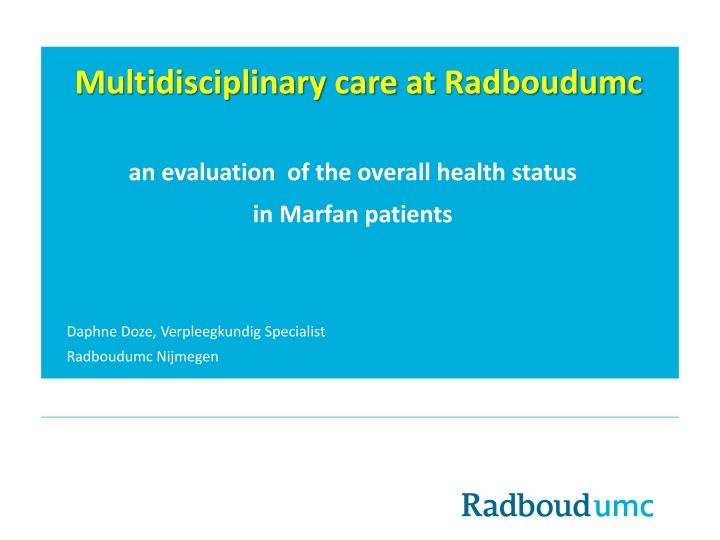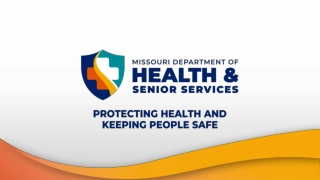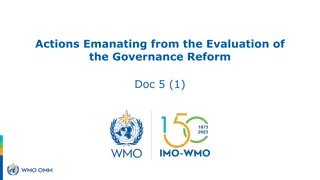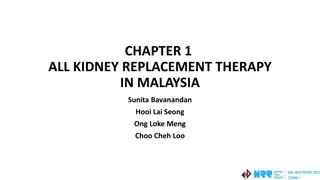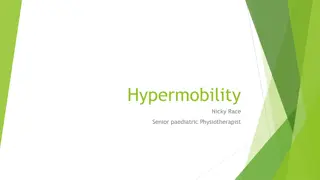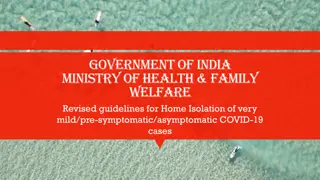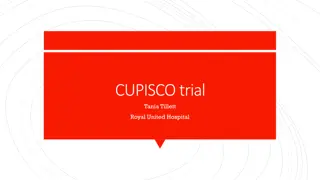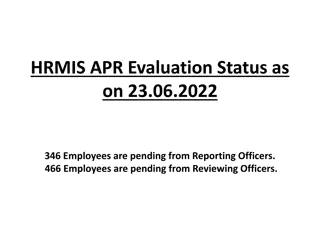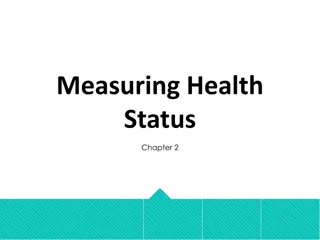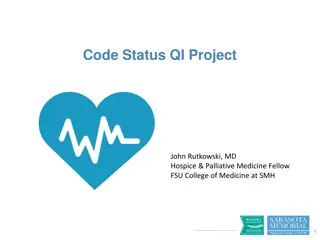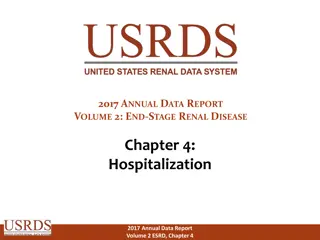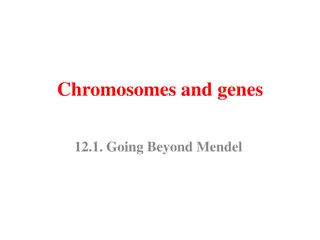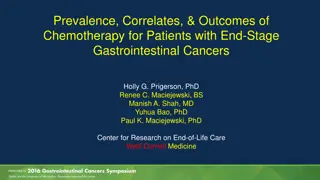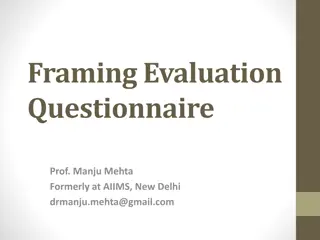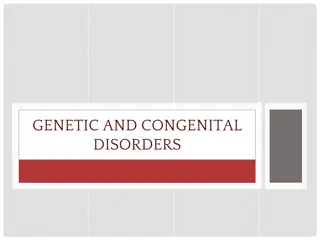Comprehensive Evaluation of Health Status in Marfan Patients at Radboudumc
This content discusses the multidisciplinary care and evaluation of overall health status in Marfan patients at Radboudumc in Nijmegen, Netherlands. It highlights the organization, expert center, and multidisciplinary approach involving various specialists. The use of NCSI for congenital cardiology and the integral health status and self-management approach are also explored, emphasizing the importance of a holistic patient-centered care model.
Download Presentation

Please find below an Image/Link to download the presentation.
The content on the website is provided AS IS for your information and personal use only. It may not be sold, licensed, or shared on other websites without obtaining consent from the author.If you encounter any issues during the download, it is possible that the publisher has removed the file from their server.
You are allowed to download the files provided on this website for personal or commercial use, subject to the condition that they are used lawfully. All files are the property of their respective owners.
The content on the website is provided AS IS for your information and personal use only. It may not be sold, licensed, or shared on other websites without obtaining consent from the author.
E N D
Presentation Transcript
Multidisciplinary care at Radboudumc an evaluation of the overall health status in Marfan patients Daphne Doze, Verpleegkundig Specialist Radboudumc Nijmegen
Content Organisation Marfan care Radboudumc, Nijmegen, Netherlands Introduction NCSI (Nijmegen Clinical Screening Instrument) Use NCSI congenital cardiology Radboudumc Results in Marfan patients Benefits, Experience, Future
Organisation Marfan care Radboudumc Expert centre for Marfan and related aortic diseases Number of patients: approximately 400 Weekly outpatient clinic Monthly screening/new patient outpatient clinic Two time s a month an outpatient clinic for children Monthly a multidisciplinary meeting concerning Marfan patients Weekly a cardiovascular radiology meeting Transition outpatient clinic
Organisation Marfan care Radboudumc Multidisciplinary Marfan-teams with dedicated specialists Ophthalmologist Cardiologist Clinical geneticist Pediatric cardiologist Nurse practitioner Orthopaedic surgeon Neurologist Cardiothoracic surgeon Vascular surgeon Radiologist Obstetrist combinations depending on the specific situation
Introduction NCSI Integral health-status and self-management Health-status and self-management are key factors in the improvement of long term outcomes (Jovicic, Holroyd-Leduc & Stratus, 2006) An integral and multi-disciplinairy approach of the patient is recommended for adults with congenital heartdisease (Baumgartner, 2010) The Patient is a partner (vision Radboudumc) - know the full context Project: voucherproject 7 patient organisations: How well are you really?
Integral health status and self-management NCSI Provide a summary of health status in 4 domains and 16 subdomains Evidence based Clinical application and possibilities for routine usage of questionnaires combined with test software Experience in usage in other areas (COPD, heart rehabilitation) Domains: 1. Physiological disorder 2. Complaints 3. Limitations in daily life 4. Problems in Quality of Life (QoL) 2, 3 en 4 are hardly related to the physiological disorder
NCSI-method 3 different applications 1. The NCSI- Measurement Instrument (Vercoulen et al., 2008; Peters et al., 2009). Integral health status measurement of details of the burden of the disorder 2. The NCSI- Intervention (Vercoulen, 2012) Identifying adaptation problems Definition of tailor-made care (individual careplan) Motivating patient to change behaviour (follow up on treatment plan)) Executed by nurse / nurse practitioner 3. De NCSI- Monitor Life-long monitoring of the patient in a manageable framework
NCSI / PPK Physiological disorder VO2, Weight Respiration Complaints Fatigure, Pain, Short of breath, Emotions Constraints in daily life at home, walking Problems with Quality of Life (QoL) gloominess, satisfaction,physical, future, social Acceptance denial, suppression, sadness, acceptance
NCSI Review PPC (PatientProfileChart) Graphical presentation: larger impact than verbally Awareness Response is the patient s response and NOT a health professional s opinion Commitment Check professional and patient; recognition of summary information Recognition and breaking defence Patient is a co-therapist and defines personally relevant treatment goals Therefore 1. Increase awareness 2. Increase commitment 3. Breaking psychological defense Motivation
Experienced health-status: NCSI measurement NCSI - Nijmegen Clinical Screening Instrument Health Status - and its 4 domains Transparancy and visibility of the experienced health status Definiton personally relevant treatment goals
NCSI Illustration of independant aspects of Health Situation; NIAF profiles 2 patients with FEV1 = 50% Physiological Complaints Constraints Q o L
Referrals to other specialists Orthopaedic Nijmegen Knowledge centre of Chronical Fatigue (NKCV) Clinical geneticist Special dentist Psychologist Digital module (f.e. cardiac and vascular) Physiotherapist Mindfulness training Sexuologist Neurologist Social welfare Vicar/priest Dietist Work physician specialist
NCSI practical usage Assessment integral Health Status Easy to understand the PatientProfileChart Web-based (fill in at home) Effective and easy to use in general practice Short duration (15-20 min) & automated Easy to interpret PatientenProfielKaart Can be executed by a non-psychologist (nurse practitioner) It supports a structured consult
Usage NCSI Congenital Cardiology Radboudumc First NCSI measurement 25-2-2013 (pilot) Usage NCSI: 2015-2016 540 patients filled in NCSI measurement (end of March 2016) 82 patients filled a second measurement 58 Marfan patients filled a NCSI measurement 11 patients filled a second measurement Growth of usage in 2016: growing from 36 lists per month
Outcome First measurements On average worse score for Marfan patients compared to overall population Explanation of scores and colours: 1 = normaal 2 = verhoogd of verlaagd 3 = problemen = normal = at risk to be problematic = problematic
Population NCSI respondents Totaal 248 292 540 "Overig" BAV 41 48 89 Marfan M V Totaal 176 217 393 31 27 58 % M % V 46% 54% 45% 55% 46% 54% 53% 47% % groep 100% 73% 16% 11% M = male V = female Overig = Other, not including BAV and Marfan
Example score NCSI QOL Marfan compared to Overig (other group of congenital patients excluding Marfan) For Quality of Life relatively more Marfan patients score problematic
NCSI Marfan (some measures put together) NCSI Congenitaal excl Marfan (n=482), en Marfan (n= 58) naast elkaar 100% Percentage of all responses 90% 80% Congential heart disease patients (left bars) compared to Marfan (right bars) 70% normaal (1) 60% 50% verhoogd (2) 40% problemen (3) 30% 20% 10% 0% NCSI Marfan Man (n=31), en Marfan Vrouw (n= 58) naast elkaar 100% Percentage of all responses 90% 80% Marfan male (left bars) compared to female (right bars) show limited deviations 70% normaal (1) 60% 50% verhoogd (2) 40% problemen (3) 30% 20% 10% 0%
NCSI / outcome measurements per age-group (1) NCSI QoL Cong excl Marfan (n=482), en Marfan (n= 58) Marfan patients: 100% 90% Percentage of all responses 80% normaal (1) 70% 60% Low score in young age- groups; (left bars congenital, right bars Marfan) problemen (3) 50% 40% 30% 20% 10% 0% <=25: Cong <=25: Marfan 26 - 40: Cong 26 - 40: Marfan 41 - 65: Cong 41 - 65: Marfan > 65: Cong > 65: Marfan NCSI HRQoL Cong excl Marfan (n=482), en Marfan (n= 58) 100% 90% Percentage of all responses 80% normaal (1) 70% verhoogd (2) 60% 50% problemen (3) 40% 30% 20% 10% 0% <=25: Cong <=25: Marfan 26 - 40: Cong 26 - 40: Marfan 41 - 65: Cong 41 - 65: Marfan > 65: Cong > 65: Marfan
NCSI / outcome measurements per age-group (2) NCSI RELATIE Cong excl Marfan (n=482), en Marfan (n= 58) Relation and Fatigue: 100% 90% Percentage of all responses 80% normaal (1) Marfan patients score lower 70% verhoogd (2) 60% 50% problemen (3) 40% 30% 20% (Very Low score in young age-groups; 10% 0% <=25: Cong <=25: Marfan 26 - 40: Cong 26 - 40: Marfan 41 - 65: Cong 41 - 65: Marfan > 65: Cong > 65: Marfan Various relevant follow up questions to be asked NCSI FATIGUE Cong excl Marfan (n=482), en Marfan (n= 58) 100% 90% Percentage of all responses 80% normaal (1) 70% verhoogd (2) 60% 50% problemen (3) 40% 30% 20% 10% 0% <=25: Cong <=25: Marfan 26 - 40: Cong 26 - 40: Marfan 41 - 65: Cong 41 - 65: Marfan > 65: Cong > 65: Marfan
Future All Marfan patients use NCSI (or NCSI-like) instruments. Because all Marfan patients should receive tailor made care based on integral health status
